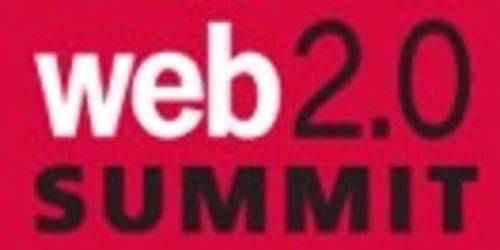The ReadWriteWeb team is at the Web 2.0 Expo. Tim O’Reilly opens the Web 2.0 Expo keynotes with a discussion on the opportunities in web 2.0 today. Here are some real-time notes on his session. His main message is to “not follow the headlines” and the hot consumer apps, but go after “big, hard problems”.

Big Opportunities:
1) web 2.0 in enterprise; “turning themselves inside out”
2) web 2.0 evolving into cloud computing
3) ambient computing (mobile phones and ubiquitous sensors)
1) enterprise
e.g. dell ideastorm
real time user facing services based on data from customers — your bank doesn’t give u this, but google does
finding meaning in that data
google pagerank = meaning hidden in links (link is a vote)
other areas where “there is hidden meaning in enterprise data”
wesabe — how people spend their money is a vote (nb: Tim noted he is an investor)
eg merchant pages give people collective intelligence about spending
2) cloud computing
Amazon got ahead of the curve by doing internet as OS; an ecosystem developing around Amazon’s infrastructure. Google has got into the game with Google App Engine. Startups like EngineYard also interesting players.
Openness is key – programmable web
3) mobile / ambient
software above the level of a single device. So mobile does not equal the phone. He talks about Microsoft Live Mesh, noting that it is currently only Windows – but he’s waiting to hear from Microsoft on its future.
new interaction paradigms – eg CNN’s political coverage using mapping technologies
Megaphone in New Orleans
The Dash, turns cellphone into GPS
Microsoft Clearflow – sensors everywhere, puts in a “dispatch layer”, aims to improve traffic reports
Quake-Catcher Network – uses motion sensors in your laptop
This all = Ambient computing; “web 2.0 not something we interact with on a laptop, it is all around us.”
Conclusion
So are we done yet? NO.
Tim lists some examples of big goals that web 2.0 can still achieve:
Changing government structure
Publicmarkup.org
Everyblock
InStedd
Tracking illegal deforestation using Google Earth
Earth Day
An Inconvenient Truth
wattzon.org (how we use our energy)
To conclude, Tim urges us to “not follow the headlines” and the hot things, but go after “big, hard problems”.
Tim finishes with a poem that is important to him, called ‘The Man Watching’ by Rainer Maria Rilke [thanks Sean for the link]. Very nice touch! His main message is to tackle big hard problems, with web 2.0. Make a difference.










